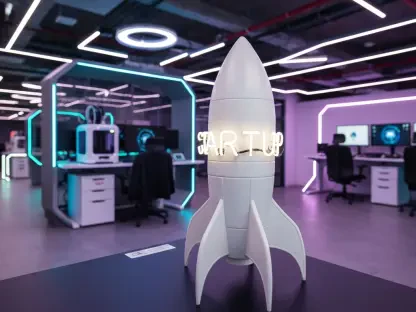Understanding the Software Integration Landscape
In today’s fast-paced digital economy, software integration stands as a critical pillar for businesses aiming to streamline operations across disparate systems, with over 80% of enterprises relying on multiple applications that need to communicate effectively. The ability to connect these tools—ranging from customer relationship management platforms to financial software—directly impacts productivity and innovation. Without robust integration, companies face siloed data, inefficient workflows, and missed opportunities for growth, making this field a cornerstone of modern business strategy.
The current landscape is dominated by integration platforms as a service (iPaaS) and unified APIs, with major players like MuleSoft, Zapier, and Boomi leading the charge in providing solutions for seamless connectivity. These platforms cater to a growing demand, particularly from B2B SaaS companies, which often juggle dozens of applications to serve their clients. However, traditional methods can be resource-intensive, requiring significant engineering effort and ongoing maintenance, which has spurred a market shift toward more efficient, scalable alternatives.
A notable trend shaping this industry is the move toward automation and AI-driven approaches, as businesses seek to reduce manual intervention and accelerate deployment timelines. This technological pivot sets the stage for groundbreaking innovations that promise to redefine how integrations are built and managed. Among these, a new suite of tools has emerged as a potential game-changer, leveraging artificial intelligence to address long-standing inefficiencies and pave the way for a more connected future.
Unveiling Membrane’s AI Suite: A Game-Changing Innovation
Core Features and Products of the Suite
Launched on November 18, 2025, in San Francisco, Membrane’s AI Suite marks a significant milestone in the pursuit of self-integrating software—a vision where applications autonomously understand and connect with each other. This suite aims to eliminate the complexities of traditional integration by harnessing AI to create fluid, real-time interactions between systems. Developed by a team led by serial entrepreneur Daniil Bratchenko, it represents a bold step forward in simplifying a historically intricate process.
At the heart of this innovation are three core products designed to tackle distinct aspects of integration challenges. The Membrane Agent allows users to build integrations using natural language prompts, intelligently handling API calls and data mappings across single or multiple applications. Meanwhile, the Membrane Engine offers a production-ready infrastructure with self-healing capabilities, supporting actions, events, webhooks, and unified API models. Lastly, Membrane Packages provide version-controlled integration code, empowering developers with ownership and flexibility to deploy within their preferred environments like Claude Code or Cursor.
These tools collectively streamline what was once a cumbersome, developer-heavy workflow into an intuitive, automated experience. By integrating seamlessly with modern development practices, the suite reduces manual effort and technical barriers. This approach not only enhances efficiency but also aligns with the needs of today’s agile software teams, setting a new standard for how integrations are conceptualized and executed.
Impact and Benefits for Businesses
For businesses, particularly in the B2B SaaS sector, the advantages of this AI-driven suite are transformative, offering rapid deployment that moves from prompt to production in just five minutes. This speed is coupled with a reported 50-fold cost reduction, achieved by minimizing engineering overhead and automating maintenance tasks. Such efficiency allows companies to redirect resources toward core product development rather than integration challenges.
Early adopters, including prominent names like Constant Contact, PandaDoc, and Dialpad, are already reaping these benefits, with over 100 B2B SaaS firms integrating the suite into their operations. These organizations highlight the platform’s ability to scale limitlessly, enabling the creation of hundreds of integrations with any API-enabled application. This adaptability ensures that businesses can keep pace with evolving technological demands without being constrained by traditional bottlenecks.
Beyond speed and cost savings, the suite addresses critical pain points such as slow deployment cycles and high operational expenses. Its real-time API context provides a forward-looking solution, ensuring that integrations remain relevant as systems evolve. For companies seeking a competitive edge, this technology offers a pathway to not just meet current needs but also anticipate future integration requirements with confidence.
Addressing Challenges in Software Integration
Traditional software integration has long been plagued by significant hurdles, including substantial engineering overhead that demands specialized skills and extensive time investment. Slow development cycles often delay critical business initiatives, while reliance on third-party platforms can lead to dependency issues, limiting flexibility. These challenges create a pressing need for solutions that can simplify processes without sacrificing control or reliability.
Membrane’s AI-driven approach directly confronts these obstacles by automating complex integration tasks, slashing both time and cost burdens for organizations. By reducing the need for manual coding and offering self-hosted deployment options, the suite prevents vendor lock-in, granting businesses greater autonomy. This shift empowers teams to focus on innovation rather than maintenance, addressing a core frustration in the integration space.
Concerns around data security and system reliability, often heightened in automated environments, are also mitigated through the suite’s robust design. Its self-healing infrastructure proactively identifies and resolves issues, ensuring consistent performance even under high demand. This focus on resilience, combined with secure deployment options, provides reassurance to companies navigating the delicate balance between efficiency and safeguarding sensitive information.
Navigating the Regulatory and Compliance Landscape
Software integration operates within a stringent regulatory framework, where data privacy laws and security standards impose critical requirements on B2B SaaS companies. Regulations such as GDPR and CCPA demand meticulous handling of personal information, while industry-specific mandates often add layers of complexity. Non-compliance can result in severe penalties, making adherence a top priority for any integration solution.
Membrane addresses these concerns by embedding compliance into its core architecture, offering secure infrastructure and developer control through compatibility with MCP standards and self-hosted options. This design ensures that businesses can tailor deployments to meet specific regulatory needs without compromising on functionality. Such flexibility is vital in an era where data breaches and legal scrutiny are ever-present risks.
Maintaining autonomy over data protection in an AI-driven integration environment remains paramount, and Membrane’s commitment to these principles stands out. By prioritizing secure practices and empowering users with deployment choices, the suite supports a balance between leveraging cutting-edge technology and adhering to legal obligations. This alignment with regulatory demands fosters trust among enterprises wary of adopting new tools in a tightly governed landscape.
The Future of Software Integration with AI
Looking ahead, the software integration industry is poised for a profound transformation, with AI-driven solutions leading the charge away from manual processes toward full automation. This shift reflects a broader trend of efficiency across technology sectors, where the expectation is no longer just connectivity but instantaneous, intelligent interoperability. From 2025 to 2027, market analysts anticipate a surge in demand for tools that can handle real-time system interactions with minimal human input.
Potential disruptors, such as advancements in machine learning and the growing need for cross-platform compatibility, are likely to further accelerate this evolution. As businesses increasingly adopt hybrid and multi-cloud environments, the complexity of integrations will intensify, necessitating adaptive, AI-powered platforms. These emerging dynamics underscore the urgency for solutions that can anticipate and respond to changing technological landscapes.
Membrane stands at the forefront of this shift, supported by $10 million in funding from investors like IA Ventures and Crew Capital, under the leadership of Daniil Bratchenko. Its pioneering approach not only addresses today’s integration challenges but also positions the company as a key influencer in shaping tomorrow’s standards. By driving the narrative of self-integrating software, Membrane is helping to redefine how businesses achieve seamless connectivity in an increasingly interconnected world.
Conclusion: A New Era of Seamless Connectivity
Reflecting on the insights gathered, Membrane’s AI Suite emerges as a transformative force that redefines software integration through unparalleled automation and cost efficiency. Its ability to scale effortlessly while tackling long-standing industry challenges marks a turning point for B2B SaaS companies and beyond. The impact of this technology ripples across diverse business sizes, proving that seamless connectivity is no longer a luxury but an achievable standard.
Looking ahead, the path forward demands continued exploration of AI’s potential to further simplify interoperability, urging businesses to adopt innovative tools that align with modern demands. Enterprises are encouraged to evaluate scalable, autonomous solutions to stay competitive in a rapidly evolving digital landscape. For those ready to embrace this shift, visiting getmembrane.com offers a gateway to discover detailed resources or initiate a free trial, setting the stage for sustained growth and innovation in their integration strategies.









